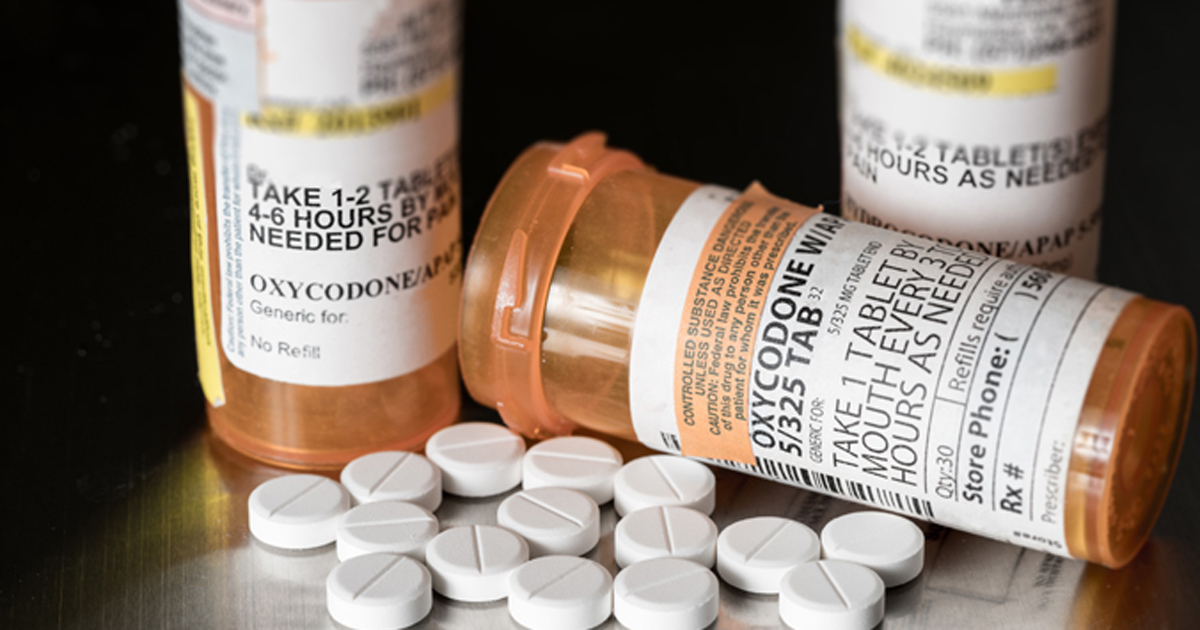First opioid lawsuit settlement raises questions with dozens more cases waiting

Purdue Pharma recently agreed to pay Oklahoma $270 million rather than face trial on charges of misleading marketing practices and misrepresentation regarding Oxycontin, according to company and state press releases.
Court battles are far from over for the pharmaceutical company, which still faces 35 state lawsuits and a federal lawsuit in Cleveland involving more than 1,000 entities alleging the company withheld information about the addictive potential of Oxycontin from the public, according to experts.
The New York Times recently reported that New York, Massachusetts, Connecticut, Rhode Island and Utah have filed suit against members of the Sackler family who own Purdue Pharma and that the Sacklers are also named in the aforementioned federal lawsuit in Cleveland.
In addition, lawsuit filings by attorney generals in New York and Massachusetts allege those states have documents that show the Sackler family sought to increase the market for Oxycontin, even after Purdue Pharma admitted in a plea deal it had “misrepresented the drug’s addictive qualities and potential for abuse.”
The Oklahoma settlement was announced about 2 months before the state trial against Purdue Pharma and three other pharmaceutical companies was slated to begin, according to the Oklahoma Attorney General’s office.
As trial preparations involving those other companies continue, David L. Noll, JD, associate professor of law at Rutgers Law School, offered potential reasons for Purdue Pharma’s decision to settle.
“The settlement seems driven by the imminent court date and the possibility that members of the Sackler family, who owns Purdue Pharma, would be called to testify,” he said.


Regina LaBelle, JD, program director for the Addiction and Public Policy Initiative at the O’Neill Institute for National and Global Health Law at Georgetown University, suggested another reason.
“The settlement may also have been prompted by the company needing fewer distractions as it reviews its strategy of blaming illicit fentanyl instead of Oxycontin for the opioid epidemic,” she said. “This strategy may be the company’s only hope of legal victory.”
Such a strategy, of focusing on non-prescription fentanyl, is based on precarious reasoning, said Lewis Nelson, MD, a former chair of FDA’s Drug Safety and Risk Management Advisory Committee, and now a chair in the department of emergency medicine at Rutgers New Jersey Medical School.
“Fentanyl existed for 50 years without significant problems. It was the overuse of opioids, particularly Oxycontin that drove illicit fentanyl use to become a significant problem,” he said.
The settlement in Oklahoma takes the legal proceedings against Purdue Pharma and the Sackler family out of the spotlight for now, but the investigations will continue, according to Noll.
“No other trials are scheduled in the immediate future where the Sacklers will be called to testify, so there probably won’t be any more settlements for a while,” he said. “However, bellwether trials in the federal case are scheduled to begin this fall. The threat of subpoenas to the Sacklers, and the threat that internal documents that suggest the family and company knew about these deceptions regarding Oxycontin’s addictive and potency qualities will enter the trial record, will create renewed settlement pressure.
“The company will take advantage of the lull between trials to work on a global settlement of opioids cases,” Noll continued. “It will work with plaintiffs' attorneys and state attorneys general to determine how much total compensation is owed, who funds the settlement, and when settlement funds are paid.”
He added that the New York and Massachusetts allegations add to the pressure on the Sackler and suggests those states will be “key participants” in the forthcoming settlement discussions.
“The lawyers will also look for a legal device that provides Purdue Pharma protection from future litigation and thus, engaged bankruptcy counsel to explore the possibility of a Chapter 11 reorganization,” Noll said.

Danielle Pelfrey Duryea, JD, director and founder, Health Justice Law & Policy Clinic, School of Law, University at Buffalo, said she did not foresee a significant amount of additional lawsuits being filed against the company.
“Many states and, especially, localities have been working with private counsel to bring these claims against Purdue Pharma, so whatever they could receive in settlement will be reduced in part by counsel's fees, and those that don't stand to benefit as much from a settlement may not see as much value in jumping in now. The more settlements are made, the less money there will be left for later comers,” she said.
Forbes reported that Oxycontin has generated Purdue Pharma more than $35 billion in sales in the nearly 20 years since its release in 1995. The company’s annual revenues are about $3 billion, largely from Oxycontin. According to Forbes, the Sackler family is worth at least $14 billion.
Some experts said that despite the company’s resources, the sheer number of lawsuits makes it unlikely Purdue Pharma can survive without consequences to its long-term viability.

“The $270 million sets a benchmark for downstream settlements, perhaps. It’s difficult to predict the outcome of the other cases, but this gives us some idea about the potential total exposure Purdue Pharmaceuticals might expect. I would not be surprised if it exercises bankruptcy options at some point,” Robert A. Freeman, PhD, professor at the School of Pharmacy and Health Professions at the University of Maryland Eastern Shore, said in an interview.
Pelfrey Duryea agreed with Freeman, referencing the Master Settlement Agreement between 46 states and the largest cigarette manufacturers to help illustrate her point.
“Even if settlements with other suing states and localities were to be, proportionally, fractions of the Oklahoma settlement for each of the other states, we could easily be looking at twice the current largest-ever pharma settlement or more. I don't know that Purdue is big enough and diversified enough to absorb that kind of payout,” Pelfrey Duryea noted.
“There are a lot of comparisons made in this case to the big tobacco litigation of the 1990s, but there you had a whole industry on the hook, not just one company — and an industry that wasn't going to just vanish. A single company can just vanish,” she added.

“Simple math” suggests Freeman and Pelfrey Duryea are right, Nelson said.
“If five percent of the U.S. population have opioid use disorder, and each one costs $100,000 to treat, that is billions of dollars. The daunting number of lawsuits and the potential price tag tied to them is clearly unsustainable,” Nelson said, adding similar lawsuits against other companies, depending on their resolution, could drastically change the pharmaceutical industry landscape.
The bulk of the Oklahoma settlement is earmarked towards a national center for addiction treatment and research. Smaller amounts are intended to address the opioid epidemic throughout Oklahoma and reimburse the state for legal costs, Purdue Pharma said in a press release.

“If Purdue Pharma declares bankruptcy, it will likely be off the financial hook for its part of the settlement,” Nelson said, adding that the Oklahoma agreement raises other concerns.
“This settlement re-ignites the debate about which is better: fixing today’s problem or planning for the future. What’s more, addiction has been studied extensively, and we still haven’t found a way to prevent it. More research funding into treatment is not going to help stop it” Nelson said. “If we could use the settlement money to support buprenorphine treatment for everyone, that would make more of an impact and we can focus our research and other efforts on prevention.”
Others were more encouraged by the Oklahoma settlement’s terms.
“This is a very positive step because it allows the creation of a critical mass of researchers and clinicians who can focus on researching opioid addiction and treatment,” Freeman said. “Even with additional federal funding to address the opioid crisis, it’s difficult to mobilize financial and human capital in one center. The amount of the award should give the center time to build a sustainable resource center for addiction studies.”

Ron Burns, DO, president-elect of the American Osteopathic Association, also expressed optimism.
“Our hope is that the [center] delivers evidence to help avert addiction and meaningfully improve treatment for the millions of Americans and their families struggling with substance use disorder,” he said.
Purdue Pharma had not responded to Healio Primary Care Today’s request for comment prior to this story’s posting. – by Janel Miller
Disclosure: Burns is president-elect of AOA. Pelfrey Duryea reports previously representing pharmaceutical and device companies in government enforcement matters, Freeman and Nelson do not report any relevant financial disclosures. LaBelle reports previously advising a law firm representing a few small municipalities in the federal lawsuit against Purdue Pharma but those responsibilities ceased prior to her commenting for this story. Noll reports previously working with the Sackler family.

